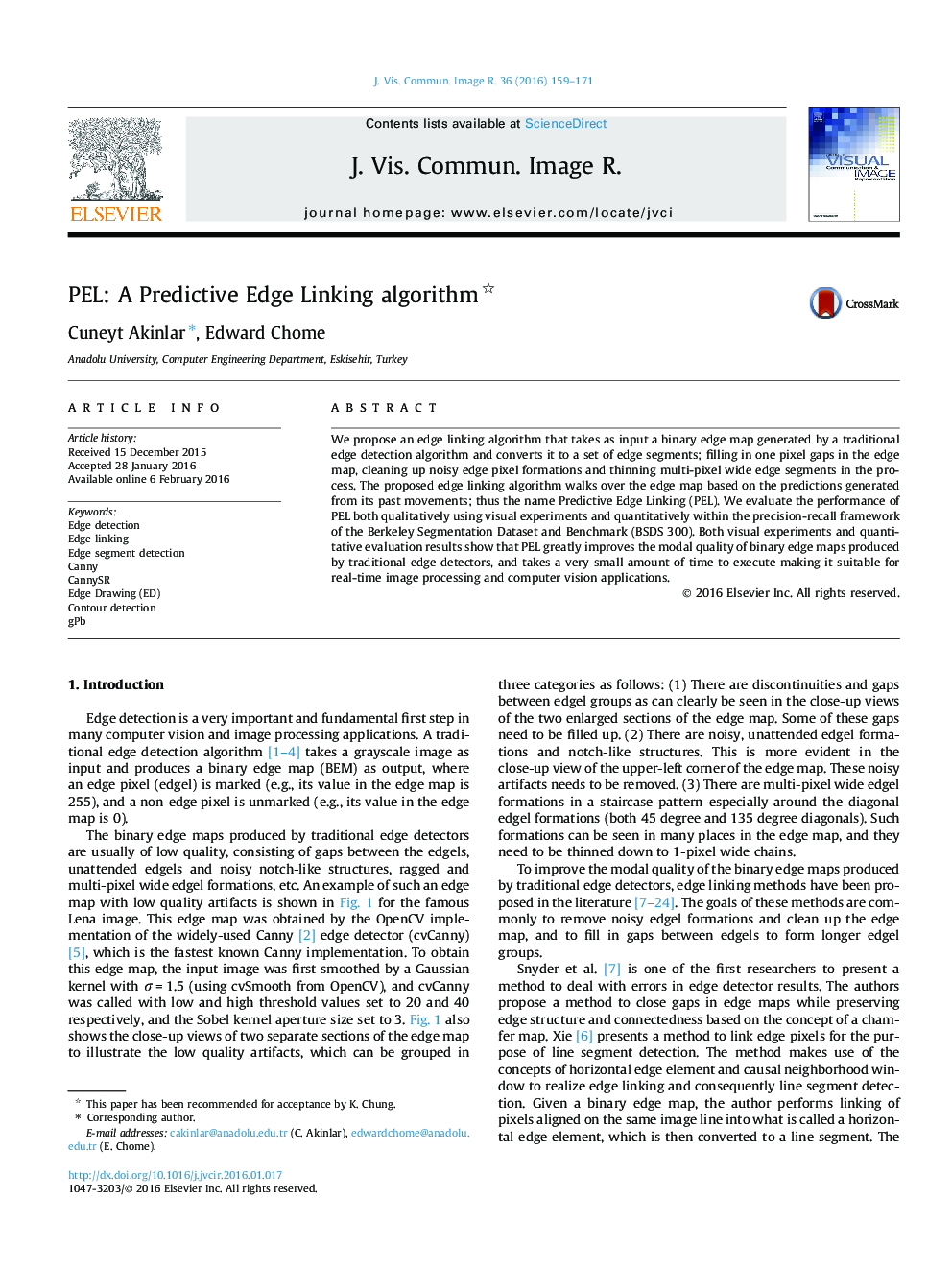| Article ID | Journal | Published Year | Pages | File Type |
|---|---|---|---|---|
| 528845 | Journal of Visual Communication and Image Representation | 2016 | 13 Pages |
•Converts a binary edge map by a traditional edge detector to a set of edge segments.•Fills one pixel gaps in the edge edge map and cleans noisy edge pixel formations.•Thins down multi-pixel wide edgel formations to one-pixel wide edge segments.•Runs real-time making it suitable for real-time applications.
We propose an edge linking algorithm that takes as input a binary edge map generated by a traditional edge detection algorithm and converts it to a set of edge segments; filling in one pixel gaps in the edge map, cleaning up noisy edge pixel formations and thinning multi-pixel wide edge segments in the process. The proposed edge linking algorithm walks over the edge map based on the predictions generated from its past movements; thus the name Predictive Edge Linking (PEL). We evaluate the performance of PEL both qualitatively using visual experiments and quantitatively within the precision-recall framework of the Berkeley Segmentation Dataset and Benchmark (BSDS 300). Both visual experiments and quantitative evaluation results show that PEL greatly improves the modal quality of binary edge maps produced by traditional edge detectors, and takes a very small amount of time to execute making it suitable for real-time image processing and computer vision applications.
